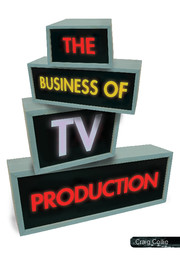Book contents
- Frontmatter
- Contents
- Preface
- Diagrams and tables
- Abbreviations
- Part A Opiate of the people: the television industry
- Chapter 1 Origins and growth of a global medium
- Chapter 2 The digital revolution
- Chapter 3 The industry in Australia
- Chapter 4 Television genres
- Part B Massage parlour: development and funding of a project
- Part C Riding the tiger: management of the production
- Part D A nod to the gatekeepers: the environment of television
- Index
- References
Chapter 1 - Origins and growth of a global medium
Published online by Cambridge University Press: 05 June 2012
- Frontmatter
- Contents
- Preface
- Diagrams and tables
- Abbreviations
- Part A Opiate of the people: the television industry
- Chapter 1 Origins and growth of a global medium
- Chapter 2 The digital revolution
- Chapter 3 The industry in Australia
- Chapter 4 Television genres
- Part B Massage parlour: development and funding of a project
- Part C Riding the tiger: management of the production
- Part D A nod to the gatekeepers: the environment of television
- Index
- References
Summary
At 3 pm on 2 November 1936, the British Broadcasting Corporation (BBC) commenced the world's first public ‘high-definition’ television service with a speech by Britain's Postmaster-General. The program included a five-minute newsreel from British Movietone, Adele Dixon's performance of a song written especially for the occasion, some Chinese jugglers, and Buck and Bubbles, a pair of African American comedy dancers. An hour later the program was broadcast again on a different system. The BBC had installed two incompatible systems, which were to transmit alternately. Within a few months, it would scrap one of them.
Waiting in a BBC corridor was John Logie Baird, a dishevelled Scotsman expecting to be honoured in the opening ceremony, but instead being snubbed by the grandees who participated. Baird, after whom Australia's annual television awards – the Logies – are named, is now regarded widely as the inventor of television or at least the father of television. In fact, he was neither. Evangelical and obstinate, he pursued a dead end in the development of a technology that now owes nothing to the systems he designed.
From this inauspicious beginning developed the most powerful medium of the second half of the twentieth century. Now, in a new millennium, it's not yet clear whether television is going through a period of adjustment or showing the first signs of slow decline. Either way, it draws from and sustains the popular ethos on a mass scale that no other cultural industry has yet been able to approach.
- Type
- Chapter
- Information
- The Business of TV Production , pp. 3 - 22Publisher: Cambridge University PressPrint publication year: 2007



